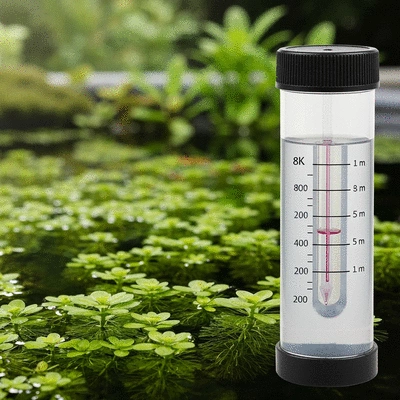Causes of Algae Proliferation
- Nutrient Overload: Excess phosphorus & nitrogen.
- Sunlight Exposure: Direct light fuels growth.
- Stagnant Water: Low circulation creates ideal conditions.

Have you ever wondered what truly lies beneath the surface of your pond? Understanding the dynamics of algae growth can not only improve the aesthetics of your aquatic haven but also boost the health of its inhabitants!
Understanding the factors contributing to algae growth and the effectiveness of various control methods is crucial for maintaining a healthy pond ecosystem. The visual below highlights key aspects of algae management, from proliferation causes to ecological impacts and evaluation of control strategies.
Welcome to the fascinating world of pond ecosystems! Understanding algae growth is crucial for maintaining a healthy pond, as it directly affects not only the water quality but also the overall health of the aquatic life within. Algae can proliferate rapidly, leading to green, murky water that can suffocate plants and fish. Let's dive deeper into what causes algae to thrive and why controlling it is essential for your pond's health.
Algae growth is primarily driven by several interconnected factors. The most common causes include:
By understanding these factors, you can take proactive steps to manage your pond's health. Have you noticed any signs of algae in your pond?
Phosphates and nitrates are essential nutrients for plant growth but can become problematic when they reach excessive levels in your pond. Here’s how they contribute to algae growth:
Maintaining a balance of these nutrients is key to controlling algae. Consider testing your pond regularly to keep tabs on nutrient levels. How do you currently manage nutrient levels in your pond?

Preventing algae proliferation is vital for several reasons. Not only does it enhance the aesthetic appeal of your pond, but it also benefits the aquatic life that depends on a balanced ecosystem. Here’s why:
Remember, a healthy pond is a happy pond! At Clear Pond Solutions, I aim to empower you with knowledge and resources to manage algae effectively. What methods have you tried to keep algae at bay in your pond?
What challenges have you faced in managing algae in your pond? Your experiences can help others in the community! Share your thoughts below:
When it comes to maintaining a healthy pond, evaluating the effectiveness of natural algae control methods is essential. At Clear Pond Solutions, we believe in understanding both the costs and the benefits of these approaches. Natural methods can often be more sustainable and environmentally friendly, but it's crucial to assess how they stack up against your specific pond needs.
In this section, we'll explore the financial implications, long-term ecological impact, and when it might be necessary to consider chemical controls for algae management. Are you ready to dive into these evaluations?
One of the first steps in evaluating natural algae control is to weigh the costs against the benefits. Here are some key considerations:

By focusing on these aspects, you can make informed decisions that align with your pond care goals. Have you evaluated the costs of your current algae management techniques?
Implementing natural algae control methods not only impacts your pond's aesthetics but also its overall ecology. Emphasizing ecological stability helps in:
At Clear Pond Solutions, we see firsthand how these preventative measures can lead to thriving aquatic environments. What ecological changes have you noticed in your pond?
While natural methods are highly effective, sometimes situations arise where chemical controls may be necessary. It's important to understand their potential impact:
Before opting for chemical solutions, carefully consider these factors. At Clear Pond Solutions, our mission is to empower you with knowledge to make the best choices for your pond's health. Have you faced challenges with algae that led to considering chemical controls?
Here is a quick recap of the important points discussed in the article:
Algae growth is primarily caused by excess nutrients (like phosphates and nitrates), high sunlight exposure, and stagnant water conditions.
While essential for plant growth, excessive levels of phosphates and nitrates act as potent fertilizers for algae, leading to rapid and harmful algae blooms that can deplete oxygen and harm aquatic life.
Preventing algae improves water clarity and quality, ensures healthier fish populations by maintaining adequate oxygen levels, and enhances the overall biodiversity and balance of the pond ecosystem.
Natural methods typically involve an initial investment in plants or equipment but offer long-term savings by reducing the need for chemicals and promoting ecological benefits. Chemical treatments provide immediate results but carry risks of harming beneficial organisms and can lead to long-term dependency.
Effective natural methods include introducing beneficial aquatic vegetation to outcompete algae for nutrients, ensuring good water circulation, and reducing direct sunlight exposure with shading.
At Clear Pond Solutions, we empower you with expert guidance and eco-friendly solutions to create and maintain pristine, healthy pond ecosystems. Your thriving pond is our priority.
